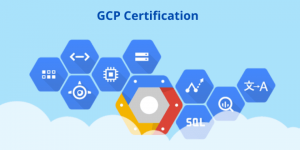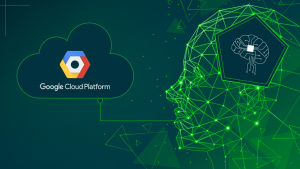The cloud industry is fiercely competitive. Every job posting for a cloud role can attract scores of applicants, all vying for that single position.
Case in point: I recently advertised a “Junior Cloud Engineer” position on Upwork. To my astonishment, over a hundred candidates applied. Most were exceptionally qualified, making the selection process challenging. However, rather than merely focusing on certifications and proposals, I prioritized past work to ensure alignment with business needs. From there, video interviews helped narrow the field.
Interestingly, many applicants were seasoned professionals—some at the managerial level or even running their own tech businesses. But experience doesn’t always equate to the right fit. Some showed signs of arrogance that can complicate collaborations. Often, I found myself yearning for someone humble, adaptable, and eager to learn.
For those aspiring to break into the cloud industry, your willingness to learn and adapt is invaluable. While the journey may be challenging, perseverance pays off, as I can personally attest. I began my career at the help desk and steadily rose through the ranks to become a cloud consultant.
If I were to start over, I’d take the following steps:
- Choose a Cloud Platform: Familiarity with one platform, like Google Cloud Platform for its user-friendliness, can make transitioning to others, like Azure or AWS, smoother.
- Pursue Certification: Starting with an entry-level certification, such as the Associate Cloud Engineer, provides a solid foundation and accelerates skill acquisition.
- Practical Application: The real test is applying what you’ve learned. For beginners, here are three projects to hone your skills and bolster your resume:
3 projects to hone your skills and bolster your resume
1. Web Application with Persistent Data Storage:
- Technologies Used: Google Cloud Storage, Cloud SQL, GCE Compute Engine
Skills Gained:
- Database Management: Understand the basics of setting up, maintaining, and optimizing relational databases with Cloud SQL.
- Backend Development: Learn how to create and deploy server-side applications on virtual machines using GCE.
- Cloud Storage: Get hands-on experience with cloud-based storage solutions and learn how to manage static assets in a distributed environment.
- Networking and Security: Grasp fundamental concepts related to securing your web application, managing permissions, and configuring cloud networks.
Steps:
- Set Up Cloud SQL:
- Create a new Cloud SQL instance.
- Configure the database instance (e.g., MySQL, PostgreSQL).
- Set up tables and schemas relevant to your web application.
- Prepare GCE Compute Engine:
- Create a new VM instance in Compute Engine.
- Install the necessary software (e.g., Apache, Python, Node.js).
- Develop or deploy your web application backend on this VM.
- Connect your web application to the Cloud SQL instance using connection strings and credentials.
- Configure Google Cloud Storage:
- Create a new bucket in GCS.
- Set permissions and authentication for secure file storage.
- Modify your web application to store/retrieve static files (e.g., images, videos) from this bucket.
Benefits:
- Scalability: Leveraging Google Cloud’s infrastructure ensures that as your application grows in users and data, it can scale without major architectural changes.
- Reliability: With Cloud SQL and GCE, you get high availability, ensuring that your application remains accessible to users.
- Cost Efficiency: You pay for the resources you use, which can be scaled up or down based on the app’s demand.
- Security: Google Cloud offers robust security features, including data encryption and access management.
Outcome:
- A functional web application that is both scalable and reliable. Users can interact with it, saving and retrieving data seamlessly. Static assets like images or videos are efficiently served, leading to a smoother user experience.
2. Real-time Data Analytics Dashboard:
- Technologies Used: Pub/Sub, Dataflow, BigQuery, Google Kubernetes Engine
Skills Gained:
- Streaming Data Management: Learn to handle real-time data ingestion with Pub/Sub.
- Data Processing: Understand how to create, deploy, and manage Dataflow pipelines for real-time data transformation.
- Big Data Analysis: Gain skills in querying massive datasets with BigQuery, learning both data structuring and SQL-based querying.
- Container Orchestration: Delve into the world of Kubernetes, understanding container deployment, scaling, and management.
Steps:
- Set Up Pub/Sub:
- Create a new Pub/Sub topic.
- Modify your data source to send real-time events or data to this topic.
- Deploy Dataflow Pipelines:
- Design a Dataflow job to process and transform incoming data from Pub/Sub.
- Connect Dataflow to ingest data from your Pub/Sub topic.
- Set Dataflow to output processed data into BigQuery.
- Configure BigQuery:
- Create a dataset in BigQuery.
- Design your table schemas to fit the processed data.
- Ensure Dataflow is populating your tables correctly.
- Deploy on Google Kubernetes Engine:
- Create a new Kubernetes cluster in GKE.
- Containerize your analytics dashboard using Docker.
- Deploy this container to your GKE cluster.
- Ensure your dashboard fetches data from BigQuery for display.
Benefits:
- Real-time Insights: Quick processing and display of data allow businesses to make timely decisions.
- Scalability: Handle vast amounts of streaming data without performance hitches.
- Integrated Analysis: Using BigQuery, you can run complex queries on your data for deeper insights.
- Flexibility: With Kubernetes, your dashboard can scale based on demand, ensuring smooth operation during high traffic.
Outcome:
- A real-time dashboard displaying up-to-the-minute data insights. Decision-makers in the business can use this tool to monitor KPIs and react to trends immediately.
3. File Storage and Retrieval System:
- Technologies Used: Google Cloud Storage, Cloud Filestore, Cloud Memorystore, GCE Compute Engine
Skills Gained:
- Distributed File Systems: Understand the principles behind cloud-based file storage systems and how to manage large files and backups efficiently.
- Caching Mechanisms: Learn about in-memory data stores and how they can drastically improve application performance.
- Backend Development for File Systems: Delve into the specifics of handling file uploads, downloads, and management at scale.
- Performance Optimization: Learn to strike a balance between memory storage (Memorystore), file storage (Filestore), and backup storage (Cloud Storage) to optimize user experience.
Steps:
- Set Up Google Cloud Storage:
- Create a new storage bucket for file backups or larger files.
- Configure permissions for uploads and downloads.
- Deploy Cloud Filestore:
- Launch a new Cloud Filestore instance.
- Mount this instance to your GCE VM, ensuring your web application can access it.
- Configure Cloud Memorystore:
- Create a Redis or Memcached instance in Cloud Memorystore.
- Update your application to cache frequently accessed data or files in this memory store for faster retrieval.
- Prepare GCE Compute Engine:
- Set up a new VM instance.
- Install the necessary backend software to manage file operations.
- Design your application to decide when to use Cloud Storage (for backups/large files), Filestore (for app-specific needs), and Memorystore (for caching).
Benefits:
- Efficiency: By combining different storage solutions, the system ensures quick file access and optimal storage usage.
- Cost Savings: Using cloud storage and filestore, you can reduce the costs associated with maintaining traditional storage infrastructure.
- Scalability: As the number of users and the demand for files grows, the system can scale to accommodate.
- Improved User Experience: With the caching mechanism, users get quicker access to frequently retrieved files, reducing wait times.
Outcome:
- A robust file storage and retrieval system that serves files to users based on demand and frequency. Users experience faster access times for commonly retrieved files, while backups and larger files are efficiently managed in the background.
With these projects under your belt, you will not only build a solid foundation in cloud technology but also demonstrate to potential employers your hands-on experience and passion for the industry. While technical know-how is essential, it’s your dedication to continuous learning and the application of knowledge that will truly set you apart in the cloud world.




